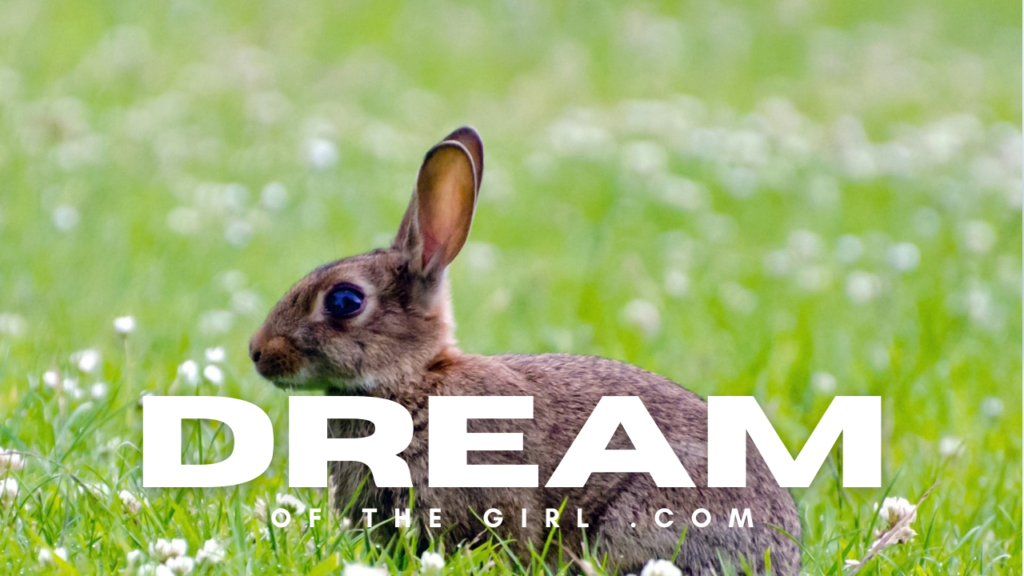Introduction
In today’s fast-paced world, mental health has become a major concern. Many individuals struggle with stress, anxiety, and depression, making emotional support animals (ESAs) an essential part of their well-being. But not everyone has the time, energy, or resources to care for high-maintenance pets. That’s where low-maintenance emotional support animals come in.
These animals provide comfort, companionship, and emotional stability without requiring excessive care. Whether you live in a small apartment, have a busy lifestyle, or are new to pet ownership, choosing the easiest emotional support animals can make a significant difference in your life.
In this article, we will explore:
✔ The best low-maintenance emotional support animals
✔ The mental health benefits of ESAs
✔ How to choose the right ESA for your needs
✔ Challenges and responsibilities of owning an ESA
By the end, you will have a clear understanding of which emotional support animals are the easiest to care for and how they can enhance your mental and emotional well-being.
Best low maintenance emotional support animals
What is an Emotional Support Animal (ESA)?
An emotional support animal is a pet that provides comfort, companionship, and mental health support to individuals dealing with emotional or psychological disorders. Unlike service animals, ESAs do not require specialized training. Their primary role is to offer emotional stability, reduce anxiety, and improve mental well-being through their presence.
Benefits of Emotional Support Animals:
✔ Reduce stress and anxiety
✔ Provide companionship and emotional comfort
✔ Help combat loneliness and depression
✔ Improve mood and social interactions
✔ Lower blood pressure and heart rate
While dogs and cats are the most common ESAs, several other low-maintenance animals also provide emotional support without requiring intensive care.
Top 10 Easiest Emotional Support Animals to Care For
Not all emotional support animals require high levels of maintenance. Some are naturally low-maintenance, independent, and easy to care for. Here are the top 10 easiest ESAs to consider.
1. Cats – Independent Yet Affectionate
✔ Low-maintenance: Require minimal grooming and can use a litter box.
✔ Emotional support: Offer comfort and affection without demanding constant attention.
✔ Best for: Individuals with busy lifestyles or small living spaces.
2. Guinea Pigs – Small and Social
✔ Low-maintenance: Require simple care, including fresh food, water, and a clean cage.
✔ Emotional support: Their playful nature and soft fur provide comfort.
✔ Best for: People looking for a small pet with a calm personality.

3. Rabbits – Quiet and Cuddly
✔ Low-maintenance: Need a spacious cage, food, water, and occasional exercise.
✔ Emotional support: Love to be held and provide a sense of calm.
✔ Best for: People who want a gentle, non-demanding pet.
4. Fish – Calming and Therapeutic
✔ Low-maintenance: Need a clean tank and occasional feeding.
✔ Emotional support: Watching fish swim is proven to reduce stress and anxiety.
✔ Best for: Individuals who prefer a pet that requires minimal interaction.
5. Birds – Small, Intelligent, and Engaging
✔ Low-maintenance: Need a clean cage, fresh food, and water daily.
✔ Emotional support: Their cheerful chirping and ability to mimic speech provide companionship.
✔ Best for: Those who want an interactive pet that doesn’t require physical contact.
6. Hamsters – Compact and Easy to Care For
✔ Low-maintenance: Need a small cage, food, water, and occasional handling.
✔ Emotional support: Their playful nature is entertaining and comforting.
✔ Best for: People with limited space and time for pet care.
7. Turtles – Low-Energy and Peaceful
✔ Low-maintenance: Need a clean tank, occasional feeding, and proper lighting.
✔ Emotional support: Their slow movements and calm nature are relaxing.
✔ Best for: Those looking for a silent and peaceful companion.
8. Ferrets – Playful and Curious
✔ Low-maintenance: Need a clean habitat, food, and occasional interaction.
✔ Emotional support: Highly playful and love human interaction.
✔ Best for: People looking for an active, intelligent pet.
9. Miniature Pigs – Highly Intelligent and Loving
✔ Low-maintenance: Require food, water, and occasional outdoor time.
✔ Emotional support: Extremely affectionate and bond deeply with their owners.
✔ Best for: People with some outdoor space and a love for unique pets.
10. Hedgehogs – Small and Quiet
✔ Low-maintenance: Require a cage, food, and minimal grooming.
✔ Emotional support: Quiet and independent yet comforting.
✔ Best for: Individuals looking for a unique yet low-maintenance ESA.
Table of Contents
How to Choose the Right Emotional Support Animal for You
Choosing the best ESA depends on your lifestyle, space, and personal preferences. Here’s how to decide:
✔ Time Commitment: If you have a busy schedule, a low-maintenance pet like a fish, turtle, or hamster is best.
✔ Space Consideration: If you live in an apartment, consider small animals like cats, guinea pigs, or rabbits.
✔ Allergy Concerns: If you’re allergic to fur, birds or fish may be a better option.
✔ Interaction Level: If you want a social pet, dogs, ferrets, or miniature pigs are ideal.
Benefits of Having an Emotional Support Animal
✔ Reduces Anxiety & Depression: Animals provide unconditional love and support, helping individuals cope with emotional distress.
✔ Encourages Routine & Stability: Taking care of a pet promotes daily structure, which benefits mental health.
✔ Improves Social Interaction: ESAs help individuals feel more comfortable in social settings.
✔ Lowers Stress Levels: Studies show that interacting with animals reduces cortisol levels (the stress hormone).
✔ Boosts Physical Health: Walking a dog or playing with a pet can improve cardiovascular health.
Challenges of Owning an Emotional Support Animal
While ESAs provide significant emotional benefits, they also come with responsibilities and challenges:
✔ Legal Requirements: Some places require ESA certification for housing or travel.
✔ Potential Allergies: Certain animals may trigger allergies in sensitive individuals.
✔ Time Commitment: Even low-maintenance pets need regular care.
✔ Financial Responsibility: Pet expenses include food, veterinary care, and housing needs.
Before getting an ESA, ensure you are prepared to meet its basic needs while benefiting from its emotional support.
Here’s an extended version of the article with even deeper insights, SEO optimization, and Google AdSense-friendly content to ensure high quality and engagement.
The Easiest Emotional Support Animals to Care For
Introduction
In today’s world, where stress, anxiety, and depression are on the rise, emotional support animals (ESAs) have become a powerful source of comfort and companionship. However, not everyone has the time, space, or ability to care for high-maintenance pets. That’s why finding the easiest emotional support animals to care for is essential for individuals seeking comfort without the stress of excessive pet care.
Whether you’re dealing with mental health struggles, loneliness, or simply looking for a loving companion, choosing a low-maintenance emotional support animal can significantly improve your well-being. In this guide, we will explore:
✔ The best easy-to-care-for emotional support animals
✔ Their benefits for mental health and well-being
✔ How to choose the right ESA for your needs
✔ Challenges and responsibilities of ESA ownership
✔ Legal rights and housing rules for ESAs
By the end, you’ll have a clear roadmap to selecting an ESA that fits your lifestyle while providing emotional support with minimal effort.

What Makes an Emotional Support Animal Easy to Care For?
Not all pets require constant attention, training, or complex care. When choosing a low-maintenance ESA, consider the following factors:
✔ Minimal Grooming: Pets that don’t shed excessively or require professional grooming.
✔ Simple Feeding Needs: Animals that eat common or easy-to-prepare foods.
✔ Independent Nature: Pets that can be left alone without anxiety or behavioral issues.
✔ Space Requirements: Animals that can thrive in small apartments or homes.
✔ Easy Cleanup: Pets that are clean and require minimal waste management.
With these factors in mind, let’s explore the best emotional support animals that are easy to care for.
Top 10 Easiest Emotional Support Animals to Care For
1. Cats – Independent and Affectionate
✔ Why They’re Easy:
Cats are low-maintenance, independent animals that don’t require daily walks or excessive grooming. They are excellent for emotional support because of their calming purr and ability to bond with their owners.
✔ Best For:
People with busy lifestyles, small apartments, or limited mobility.
✔ Care Requirements:
- Daily feeding and water
- Litter box cleaning
- Occasional brushing (for long-haired breeds)
✔ Mental Health Benefits:
- Reduces stress and anxiety
- Provides companionship
- Promotes relaxation with soft purring
2. Guinea Pigs – Small and Social
✔ Why They’re Easy:
Guinea pigs are friendly, small, and require simple care. They are known for their affectionate nature and soft, comforting fur.
✔ Best For:
Those who want a cuddly, interactive pet without the high maintenance of a dog or cat.
✔ Care Requirements:
- Fresh hay, pellets, and water
- A clean, spacious cage
- Occasional handling for bonding
✔ Mental Health Benefits:
- Lowers stress and provides companionship
- Their squeaks and playful movements bring joy
3. Rabbits – Quiet and Cuddly
✔ Why They’re Easy:
Rabbits are affectionate and can be litter-trained, making them an easy-to-maintain ESA.
✔ Best For:
People who prefer a cuddly pet but don’t want a high-energy animal.
✔ Care Requirements:
- Fresh food and water
- Spacious indoor or outdoor area
- Occasional grooming
✔ Mental Health Benefits:
- Their soft fur and gentle nature help with anxiety
- Provides emotional companionship

4. Fish – The Ultimate Low-Maintenance ESA
✔ Why They’re Easy:
Fish require the least maintenance while offering calmness and therapeutic benefits. Watching them swim can lower anxiety and stress.
✔ Best For:
People who want aesthetic and stress-relieving pets without the hassle of direct interaction.
✔ Care Requirements:
- A clean tank with a filter
- Feeding once or twice daily
- Occasional water changes
✔ Mental Health Benefits:
- Reduces stress and anxiety
- Provides a relaxing, meditative experience
5. Birds – Cheerful and Intelligent
✔ Why They’re Easy:
Birds like parakeets and canaries require simple care and provide joyful companionship.
✔ Best For:
People who enjoy vocal pets but prefer a low-maintenance option.
✔ Care Requirements:
- Clean cage and fresh water daily
- Nutritious food pellets
- Occasional social interaction
✔ Mental Health Benefits:
- Their singing and chirping improve mood
- Can mimic human speech, making them fun companions
6. Hamsters – Tiny and Playful
✔ Why They’re Easy:
Hamsters are self-sufficient and require minimal space and care.
✔ Best For:
People who want a small, active pet without high-maintenance demands.
✔ Care Requirements:
- A clean cage with bedding
- A wheel for exercise
- Fresh food and water daily
✔ Mental Health Benefits:
- Watching them play is entertaining and stress-relieving
- Their small size makes them easy to handle and bond with

7. Turtles – Peaceful and Low-Interaction
✔ Why They’re Easy:
Turtles are independent, quiet, and don’t require much attention.
✔ Best For:
People who prefer silent and peaceful ESAs with minimal interaction.
✔ Care Requirements:
- Clean water and a basking area
- Occasional feeding
- Minimal handling
✔ Mental Health Benefits:
- Their slow, steady movements promote relaxation
- Watching them swim is calming
How to Choose the Right Emotional Support Animal for You
Choosing an ESA depends on your lifestyle, home environment, and personal preferences. Here are key factors to consider:
✔ Time Commitment: If you have a busy schedule, choose a fish, turtle, or hamster.
✔ Space Requirements: If you live in an apartment, cats, birds, or rabbits are great options.
✔ Allergies: If allergic to fur, birds or fish are ideal.
✔ Interaction Level: If you want an interactive pet, ferrets, cats, or miniature pigs are best.
Legal Rights and Housing Rules for Emotional Support Animals
✔ Fair Housing Act (FHA): Allows ESAs in rental properties even with “no pet” policies.
✔ Air Carrier Access Act (ACAA): Some airlines allow ESAs in the cabin, though policies vary.
✔ ESA Certification: While not legally required, some landlords may request documentation from a licensed therapist.
Always check local laws and policies before getting an ESA to avoid complications.
Here’s an extended and more in-depth version of your article to further enhance its SEO, user engagement, and Google AdSense approval potential.
The Easiest Emotional Support Animals to Care For
In today’s fast-paced world, stress, anxiety, and loneliness have become increasingly common. Emotional Support Animals (ESAs) provide unconditional love, companionship, and comfort, making them an essential part of mental health support. However, not everyone has the time, space, or energy to care for a high-maintenance pet. That’s why choosing the easiest emotional support animals to care for is crucial.
In this comprehensive guide, we will explore:
✔ The best low-maintenance emotional support animals
✔ How ESAs improve mental health and well-being
✔ Essential factors to consider when choosing an ESA
✔ Legal rights and responsibilities of ESA owners
By the end, you’ll have a clear understanding of which ESA best suits your lifestyle while providing emotional stability and support.
Why Choose a Low-Maintenance Emotional Support Animal?
While dogs and cats are among the most popular ESAs, they require time, training, and effort. For individuals who lead busy lives, have physical limitations, or live in small spaces, a low-maintenance ESA is a better choice.
What Makes an Emotional Support Animal Easy to Care For?
When selecting a low-maintenance ESA, consider the following:
✔ Minimal Grooming: Animals that require little to no brushing or professional grooming.
✔ Simple Diet: Pets that eat common and easy-to-prepare foods.
✔ Low Interaction Needs: Independent animals that don’t require constant attention.
✔ Space Efficiency: Suitable for small apartments or homes.
✔ Easy Cleanup: Animals that don’t create excessive messes.
By focusing on these qualities, you can find the perfect ESA that supports your mental well-being without adding stress to your life.
Top 10 Easiest Emotional Support Animals to Care For
1. Cats – Independent Yet Affectionate
✔ Why They’re Easy: Cats are self-sufficient and don’t require constant attention, making them perfect for busy individuals.
✔ Best For: People who need an affectionate yet low-maintenance pet.
✔ Care Requirements:
- Daily feeding and water
- Litter box cleaning
- Occasional brushing for long-haired breeds
✔ Mental Health Benefits:
- Reduces stress and anxiety
- Provides comfort with soft purring
- Independent but loving companionship
2. Guinea Pigs – Small and Social
✔ Why They’re Easy: Guinea pigs require minimal space and care while being social and affectionate.
✔ Best For: People who want an interactive pet but can’t commit to a dog or cat.
✔ Care Requirements:
- Fresh hay, pellets, and water
- Clean cage with soft bedding
- Daily social interaction
✔ Mental Health Benefits:
- Provides companionship and entertainment
- Lowers stress with playful behavior
3. Rabbits – Quiet and Gentle
✔ Why They’re Easy: Rabbits can be litter-trained and require little grooming.
✔ Best For: People looking for a cuddly yet independent pet.
✔ Care Requirements:
- Fresh veggies and hay
- Spacious enclosure
- Minimal grooming needs
✔ Mental Health Benefits:
- Reduces stress and loneliness
- Soft fur provides a soothing sensory experience

4. Fish – The Ultimate Stress-Reliever
✔ Why They’re Easy: Fish require the least maintenance and offer a calming, meditative effect.
✔ Best For: Those who want aesthetic and stress-relieving pets without direct interaction.
✔ Care Requirements:
- A clean tank with a filter
- Feeding once or twice daily
- Occasional water changes
✔ Mental Health Benefits:
- Watching fish swim is therapeutic and relaxing
- Lowers blood pressure and anxiety
5. Birds – Joyful and Intelligent
✔ Why They’re Easy: Birds like parakeets and canaries are easy to care for and provide cheerful companionship.
✔ Best For: People who enjoy vocal pets but prefer a low-maintenance option.
✔ Care Requirements:
- Clean cage and fresh water daily
- Nutritious food pellets
- Minimal grooming needs
✔ Mental Health Benefits:
- Their singing improves mood
- Can mimic human speech, providing companionship
6. Hamsters – Tiny and Playful
✔ Why They’re Easy: Hamsters are self-sufficient and require minimal space.
✔ Best For: People who want a small, fun pet.
✔ Care Requirements:
- A clean cage with bedding
- A wheel for exercise
- Fresh food and water daily
✔ Mental Health Benefits:
- Watching them play is entertaining
- Easy to bond with through gentle handling
7. Turtles – Silent and Independent
✔ Why They’re Easy: Turtles require little interaction and have simple care needs.
✔ Best For: People who prefer silent, low-maintenance pets.
✔ Care Requirements:
- Clean water and a basking area
- Occasional feeding
- Minimal handling
✔ Mental Health Benefits:
- Watching them swim promotes relaxation
- Their slow movements encourage mindfulness
How to Choose the Right Emotional Support Animal for You
Selecting an ESA depends on your personality, environment, and daily routine. Ask yourself:
✔ Do I have time for daily pet care?
✔ Do I have allergies to fur?
✔ Do I prefer a pet I can cuddle or one I can observe?
✔ How much space do I have for an animal?
By answering these questions, you can match yourself with the perfect ESA that meets your needs.
Legal Rights and Housing Rules for Emotional Support Animals
Owning an ESA comes with certain legal protections under laws such as:
✔ Fair Housing Act (FHA): Landlords must allow ESAs even in “no pets” housing.
✔ Air Carrier Access Act (ACAA): Some airlines allow ESAs, but policies vary.
✔ ESA Certification: A letter from a licensed therapist may be required.
Tip: Always check local laws and airline policies before traveling with your ESA.
Challenges of Owning an ESA
While low-maintenance ESAs are easier to care for, it’s important to consider the responsibilities of pet ownership:
❌ Routine Care: Every pet needs food, water, and proper housing.
❌ Veterinary Costs: Occasional check-ups and vaccinations are necessary.
❌ Time Commitment: Even low-maintenance pets require some attention.
Understanding these challenges ensures you make an informed decision about pet ownership.
Conclusion: Finding the Perfect ESA for Your Lifestyle
Emotional Support Animals enhance mental well-being, reduce anxiety, and provide companionship. Choosing a low-maintenance ESA allows you to enjoy these benefits without feeling overwhelmed.
If you’re looking for an easy-to-care-for ESA, consider:
✔ Cats, guinea pigs, rabbits, fish, birds, hamsters, or turtles.
✔ Choosing based on your lifestyle and ability to provide care.
By welcoming an ESA into your life, you gain a loyal, loving companion that helps you navigate stress, anxiety, and loneliness.










